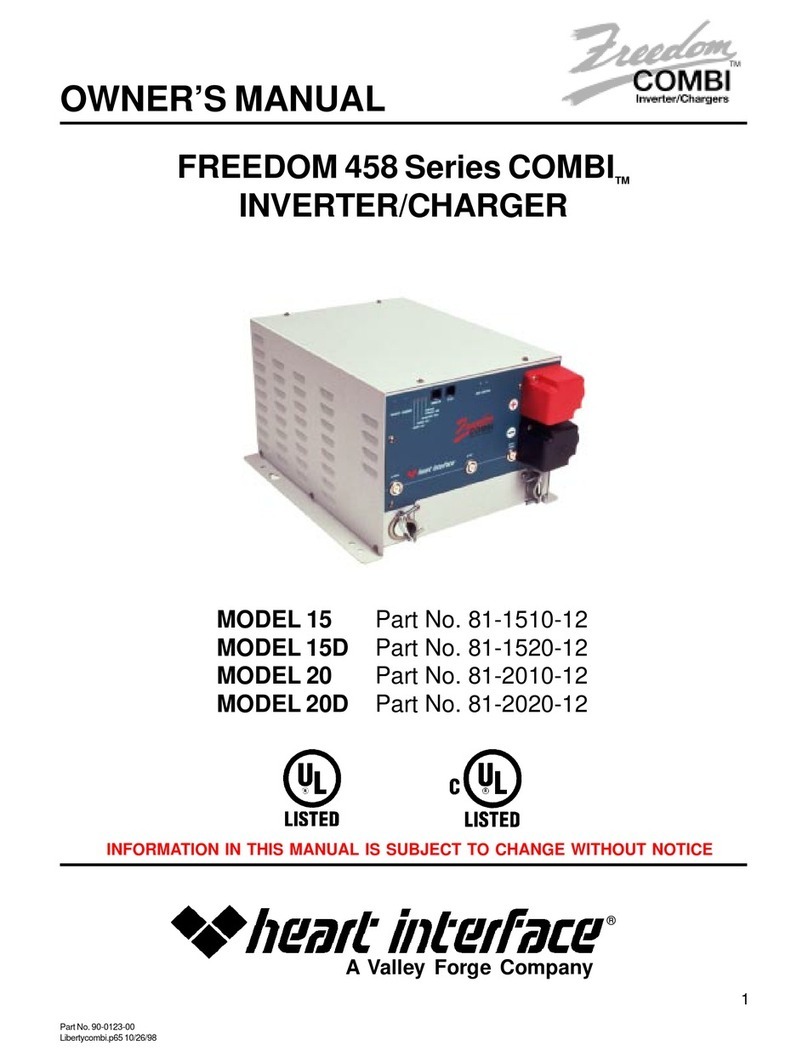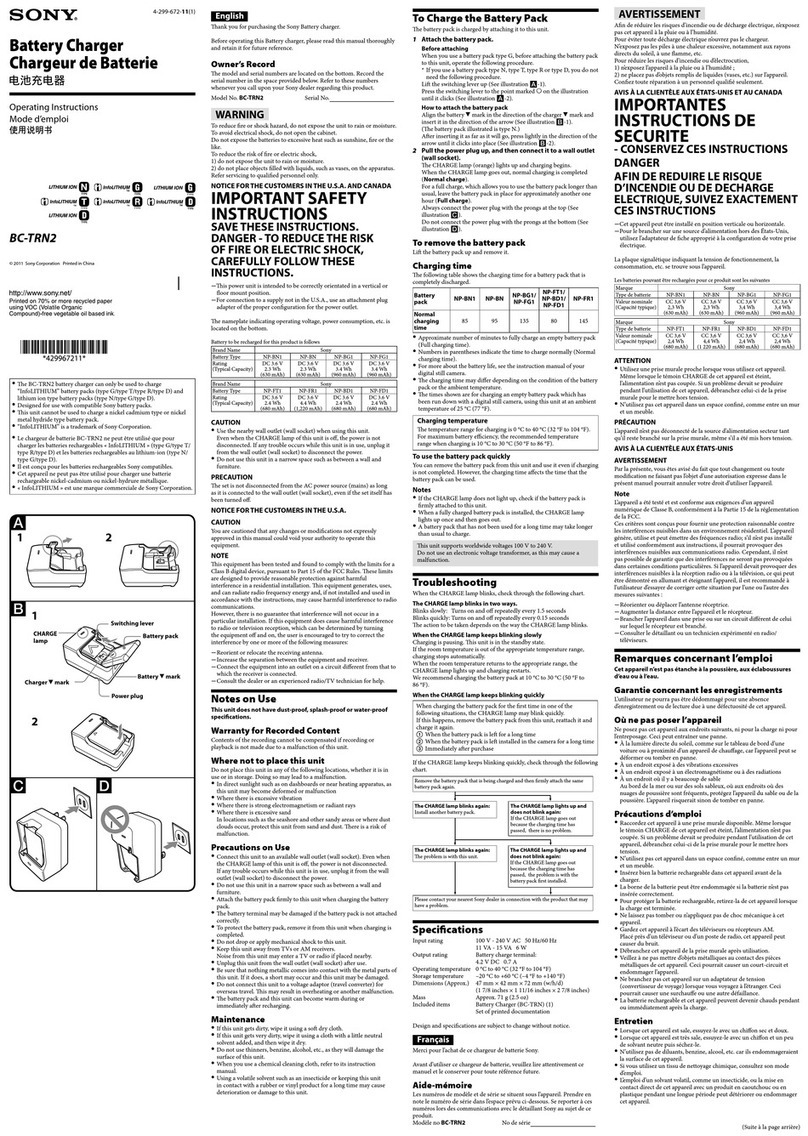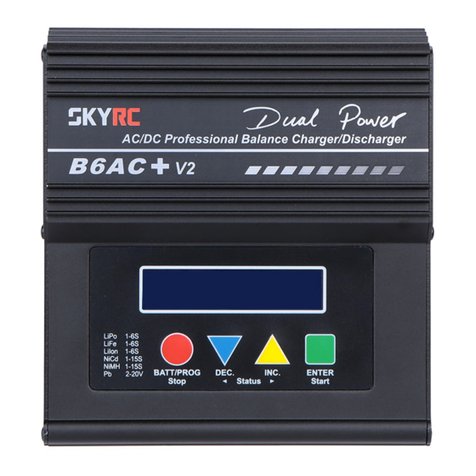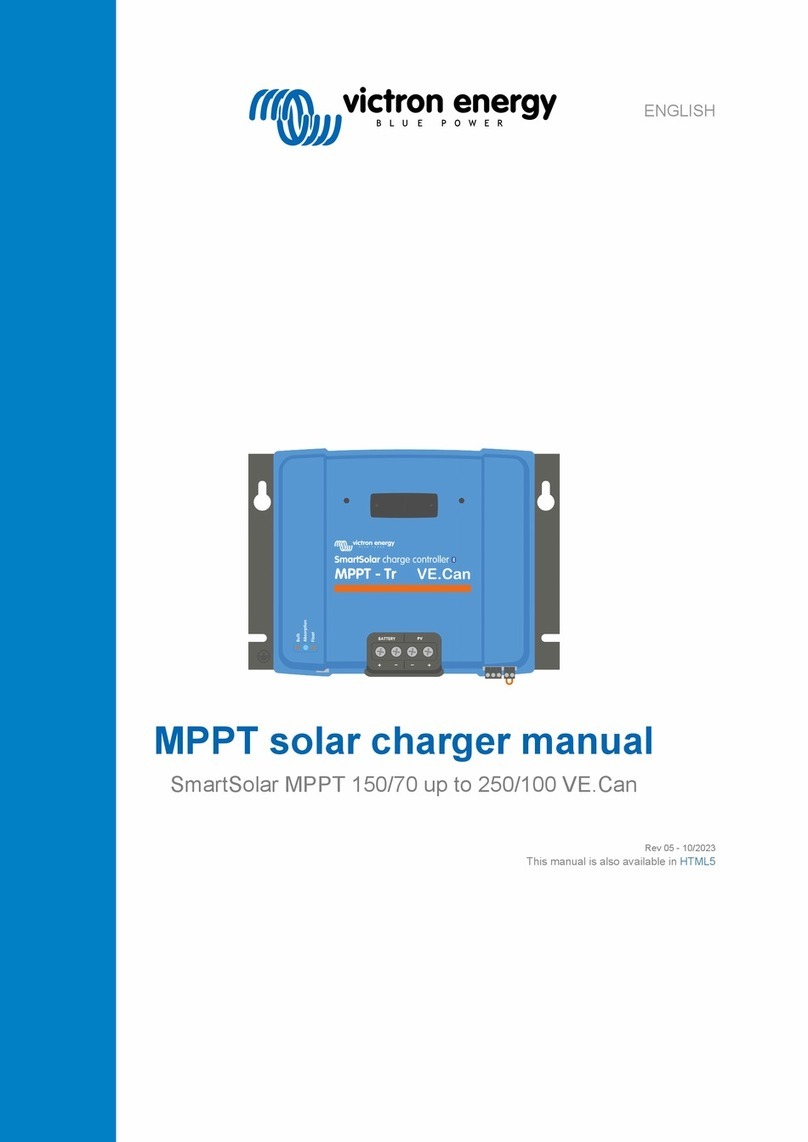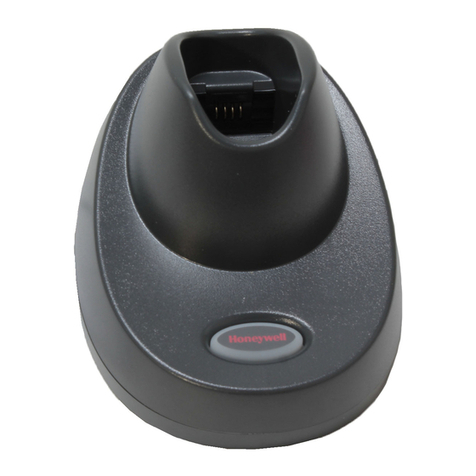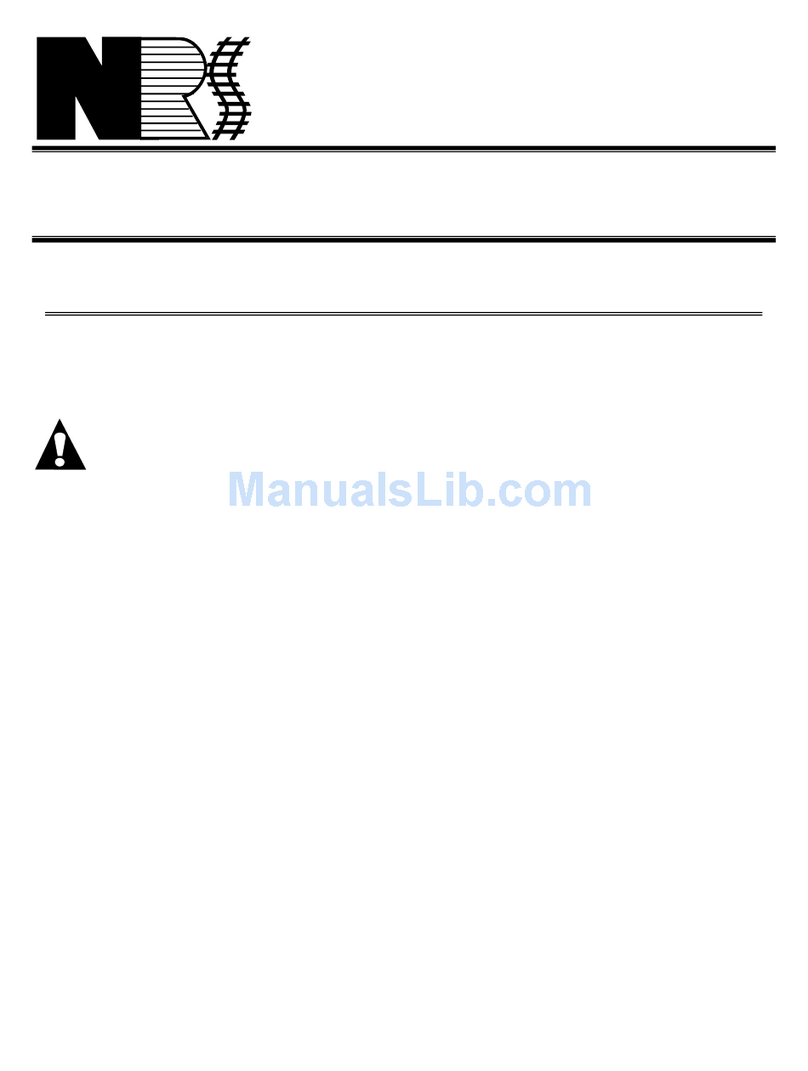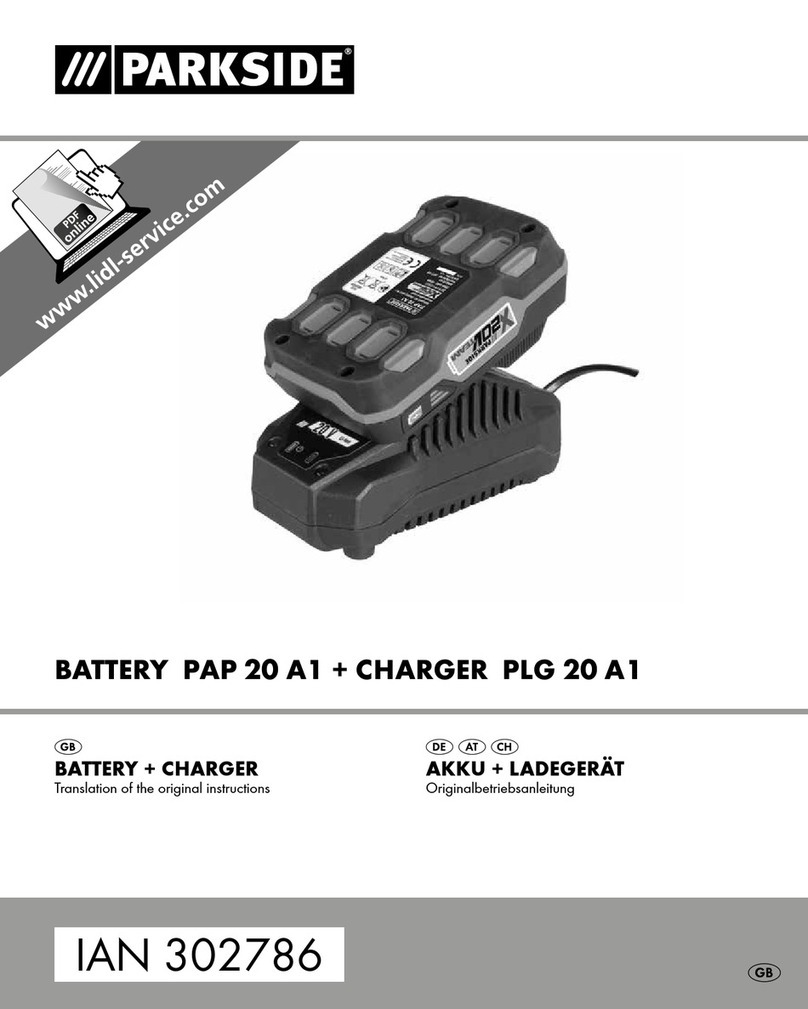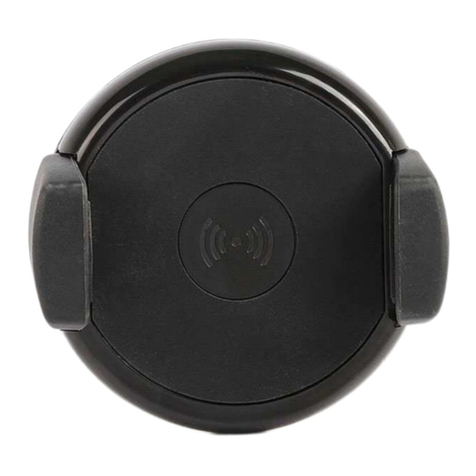Heart Interface 10 User manual

Part No. 90-0123-00
Libertycombi.p65 11/05/99
1
OWNER’S MANUALOWNER’S MANUAL
OWNER’S MANUALOWNER’S MANUAL
OWNER’S MANUAL
FREEDOM 458 Series COMBIFREEDOM 458 Series COMBI
FREEDOM 458 Series COMBIFREEDOM 458 Series COMBI
FREEDOM 458 Series COMBITMTM
TMTM
TM
INVERTER/CHARGERINVERTER/CHARGER
INVERTER/CHARGERINVERTER/CHARGER
INVERTER/CHARGER
®
INFORMAINFORMA
INFORMAINFORMA
INFORMATION IN THIS MANUALTION IN THIS MANUAL
TION IN THIS MANUALTION IN THIS MANUAL
TION IN THIS MANUAL IS SUBJECT TIS SUBJECT T
IS SUBJECT TIS SUBJECT T
IS SUBJECT TO CHANGE WITHOUT NOTICEO CHANGE WITHOUT NOTICE
O CHANGE WITHOUT NOTICEO CHANGE WITHOUT NOTICE
O CHANGE WITHOUT NOTICE
Model 10
Model 15
Model 20
Model 25
Model 30
*Manual includes all models of Freedom 458 Inverter/Charger

Part No. 90-0123-00
Libertycombi.p65 11/05/99
2
SAFETYSAFETY
SAFETYSAFETY
SAFETY SUMMARSUMMAR
SUMMARSUMMAR
SUMMARYY
YY
Y
Safety information for installation andSafety information for installation and
Safety information for installation andSafety information for installation and
Safety information for installation and
operation is contained throughout thisoperation is contained throughout this
operation is contained throughout thisoperation is contained throughout this
operation is contained throughout this
manual where it applies and is not includedmanual where it applies and is not included
manual where it applies and is not includedmanual where it applies and is not included
manual where it applies and is not included
in this summaryin this summary
in this summaryin this summary
in this summary..
..
.
Definitions:Definitions:
Definitions:Definitions:
Definitions:
WW
WW
Warning statementsarning statements
arning statementsarning statements
arning statements identify conditions or
practices which could result in personal injury,
loss of life, damage to equipment or other
property.
Fuse ReplacementFuse Replacement
Fuse ReplacementFuse Replacement
Fuse Replacement For continued protection
against the possibility of fire, replace the fuse
only with a fuse of the specified voltage,
current and type ratings.
Power SourcePower Source
Power SourcePower Source
Power Source To avoid damage, operate the
equipment only within the specified AC (line)
and DC (battery) voltages.
ServicingServicing
ServicingServicing
Servicing To reduce the risk of electric shock
do not open this unit. There are no user
serviceable parts inside. Refer all service to
qualified personnel.
The statements, specifications and instructions in this publication are believed to be correct. No warranty is made,The statements, specifications and instructions in this publication are believed to be correct. No warranty is made,
The statements, specifications and instructions in this publication are believed to be correct. No warranty is made,The statements, specifications and instructions in this publication are believed to be correct. No warranty is made,
The statements, specifications and instructions in this publication are believed to be correct. No warranty is made,
expressed or implied by the seller or manufacturer with respect to any results or lack thereof from the use ofexpressed or implied by the seller or manufacturer with respect to any results or lack thereof from the use of
expressed or implied by the seller or manufacturer with respect to any results or lack thereof from the use ofexpressed or implied by the seller or manufacturer with respect to any results or lack thereof from the use of
expressed or implied by the seller or manufacturer with respect to any results or lack thereof from the use of
information in this publication and no liability is assumed for any direct or consequential damages, personal loss orinformation in this publication and no liability is assumed for any direct or consequential damages, personal loss or
information in this publication and no liability is assumed for any direct or consequential damages, personal loss orinformation in this publication and no liability is assumed for any direct or consequential damages, personal loss or
information in this publication and no liability is assumed for any direct or consequential damages, personal loss or
injurinjur
injurinjur
injur yy
yy
y..
..
.All statements made herAll statements made her
All statements made herAll statements made her
All statements made herein arein ar
ein arein ar
ein ar e strictly to be used ore strictly to be used or
e strictly to be used ore strictly to be used or
e strictly to be used or rr
rr
relied on at the userelied on at the user
elied on at the userelied on at the user
elied on at the user ’’
’’
’
s risk. © 1998 Hears risk. © 1998 Hear
s risk. © 1998 Hears risk. © 1998 Hear
s risk. © 1998 Hear t Interfacet Interface
t Interfacet Interface
t Interface
Corporation. All rights reserved.Corporation. All rights reserved.
Corporation. All rights reserved.Corporation. All rights reserved.
Corporation. All rights reserved.
Thank you for purchasing a Heart Interface Freedom 458 Series CombiTM Inverter/
Charger. Heart Interface takes pride in manufacturing quality products specifically
designed to meet your power requirements.
Freedom Combi Inverter/Chargers provide silent, efficient and reliable AC power for a
variety of applications. They feature “hands-free” operation, automatic 3-stage battery
charging and automatic AC transfer switching. For your convenience, service is available
world-wide by qualified service centers.
If you have any questions about your Freedom Combi, please contact Heart
Interface toll free: (800) 446-6180(800) 446-6180
(800) 446-6180(800) 446-6180
(800) 446-6180.
For technical support and additional information about Heart Interface products, visit
our web site at wwwwww
wwwwww
www
.heartinterface.com.heartinterface.com
.heartinterface.com.heartinterface.com
.heartinterface.com or send us e-mail:

Part No. 90-0123-00
Libertycombi.p65 11/05/99
3
IntroductionIntroduction
IntroductionIntroduction
Introduction......................... 44
44
4
ThingsThings
ThingsThings
Things YY
YY
You Should Knowou Should Know
ou Should Knowou Should Know
ou Should Know ............. 55
55
5
Circuit Breaker Protection
Thermostat Controlled Cooling
Inverter Idle Circuit
Low and High Battery Shutdown
Power Sharing
Temperature Sensitive Charging
OperationOperation
OperationOperation
Operation .......................... 77
77
7
Optional Remote Control Panels . . . . . . . . .10Optional Remote Control Panels . . . . . . . . .10
Optional Remote Control Panels . . . . . . . . .10Optional Remote Control Panels . . . . . . . . .10
Optional Remote Control Panels . . . . . . . . .10
BatteriesBatteries
BatteriesBatteries
Batteries .......................... 11
11
111
11
1
Battery Types
Battery Interconnection
Battery Bank Ratings and Sizing
Battery ChargingBattery Charging
Battery ChargingBattery Charging
Battery Charging.................... 1515
1515
15
Freedom Battery Chargers
Battery Charger VBattery Charger V
Battery Charger VBattery Charger V
Battery Charger Voltage Toltage T
oltage Toltage T
oltage Tableable
ableable
able .........2020
2020
20
Installation PrecautionsInstallation Precautions
Installation PrecautionsInstallation Precautions
Installation Precautions .............. 2121
2121
21
InstallationInstallation
InstallationInstallation
Installation ......................... 2222
2222
22
Key Installation Points
Grounding
Neutral Bonding
AC Wiring
AC Input
AC Output
Ground Fault Circuit Interrupters
Remote Control Wiring
TSC Temperature Senstive Charging
DC Wiring
Battery Cable Fusing
Power ON Checks
TT
TT
TABLE OF CONTENTSABLE OF CONTENTS
ABLE OF CONTENTSABLE OF CONTENTS
ABLE OF CONTENTS
TT
TT
Troubleshootingroubleshooting
roubleshootingroubleshooting
roubleshooting .....................3131
3131
31
LED Fault Status
Things to Check
GlossaryGlossary
GlossaryGlossary
Glossary ............................3333
3333
33
SpecificationsSpecifications
SpecificationsSpecifications
Specifications ......................... 3535
3535
35
Installation DiagramsInstallation Diagrams
Installation DiagramsInstallation Diagrams
Installation Diagrams ................... 3636
3636
36
Not recommended for use in marine environmentNot recommended for use in marine environment
Not recommended for use in marine environmentNot recommended for use in marine environment
Not recommended for use in marine environment
WW
WW
Warrantyarranty
arrantyarranty
arranty . . . . . . . . . . . . . . . . . . . 4848
4848
48

Part No. 90-0123-00
Libertycombi.p65 11/05/99
4
This owner’s manual describes the
Freedom 458 Series CombiTM Inverter/
Chargers from Heart Interface. These units
perform three distinct functions:
1. DC to AC power inverting.1. DC to AC power inverting.
1. DC to AC power inverting.1. DC to AC power inverting.
1. DC to AC power inverting.
2. Automatic transfer switching between2. Automatic transfer switching between
2. Automatic transfer switching between2. Automatic transfer switching between
2. Automatic transfer switching between
inverter power and incominginverter power and incoming
inverter power and incominginverter power and incoming
inverter power and incoming AC powerAC power
AC powerAC power
AC power..
..
.
3. Automatic 3-Stage Battery charging plus3. Automatic 3-Stage Battery charging plus
3. Automatic 3-Stage Battery charging plus3. Automatic 3-Stage Battery charging plus
3. Automatic 3-Stage Battery charging plus
manual battery equalizing.manual battery equalizing.
manual battery equalizing.manual battery equalizing.
manual battery equalizing.
• The inverter provides regulated 120 volt AC
power at a crystal controlled frequency from a
deep cycle battery bank and is rated at:
Freedom 10Freedom 10
Freedom 10Freedom 10
Freedom 10 1000 watts1000 watts
1000 watts1000 watts
1000 watts
Freedom 15 & 15DFreedom 15 & 15D
Freedom 15 & 15DFreedom 15 & 15D
Freedom 15 & 15D 1500 watts1500 watts
1500 watts1500 watts
1500 watts
Freedom 20 & 20DFreedom 20 & 20D
Freedom 20 & 20DFreedom 20 & 20D
Freedom 20 & 20D 2000 watts2000 watts
2000 watts2000 watts
2000 watts
Freedom 25Freedom 25
Freedom 25Freedom 25
Freedom 25 2500 watts2500 watts
2500 watts2500 watts
2500 watts
Freedom 30Freedom 30
Freedom 30Freedom 30
Freedom 30 3000 watts3000 watts
3000 watts3000 watts
3000 watts
The output is a modified sine wave and is
compatible with most appliances, tools and
other 120 VAC equipment. (Note: Certain laser
printers, breadmakers, digital clocks and
small battery chargers may not operate on
modfied sinewave.) An idle mode reduces bat-
tery power consumption when loads are re-
moved from the inverter.There is a low battery
cutout protection circuit and
momentary surge power of more than twice
the inverter rating for starting electric motors.
High efficiency insures the longest possible
battery life between charges.
• The internal transfer switch allows the
Freedom Inverter/Charger to be connected to
an external AC source and transfer the source
INTRODUCTIONINTRODUCTION
INTRODUCTIONINTRODUCTION
INTRODUCTION
power through directly to the loads. When the
external AC power source is disconnected, the
transfer switch allows automatic switching
back to the inverter.
The Freedom Inverter/Charger operates
as a self-contained backup power system, just
add batteries.
• Freedom battery chargers are electronically
controlled and rated at a maximum output
current:
Freedom 10Freedom 10
Freedom 10Freedom 10
Freedom 10 50 Amps DC50 Amps DC
50 Amps DC50 Amps DC
50 Amps DC
Freedom 15 & 15DFreedom 15 & 15D
Freedom 15 & 15DFreedom 15 & 15D
Freedom 15 & 15D 75 Amps DC75 Amps DC
75 Amps DC75 Amps DC
75 Amps DC
Freedom 20 & 20DFreedom 20 & 20D
Freedom 20 & 20DFreedom 20 & 20D
Freedom 20 & 20D 100 Amps DC100 Amps DC
100 Amps DC100 Amps DC
100 Amps DC
Freedom 25Freedom 25
Freedom 25Freedom 25
Freedom 25 130 Amps DC130 Amps DC
130 Amps DC130 Amps DC
130 Amps DC
Freedom 30 140 Amps DCFreedom 30 140 Amps DC
Freedom 30 140 Amps DCFreedom 30 140 Amps DC
Freedom 30 140 Amps DC
They are designed to rapidly and optimally
charge wet, gel, or Absorbed Glass Mat
(AGM)** cell deep-cycle batteries. Battery
charging is automatically accomplished in 3
stages: Bulk Charge, Acceptance Charge and
Float Charge.
Using a Remote Control Panel or Link
Instrumentation, a manually engaged
Equalizing Charge cycle is possible. Simple,
automatic operation is made possible by the
microprocessor in the Freedom Inverter/
Charger. In most cases, no attention or
maintenance is required.
Electronic ProtectionElectronic Protection
Electronic ProtectionElectronic Protection
Electronic Protection
Fast-acting electronic circuits protect
the inverter from overloads and short circuits.
Other protection includes a low and high
battery voltage cutoff and automatic shutdown
if an over temperature condition occurs. When
the fault condition is corrected, the unit will
automatically reset. Example: remove
overload, charge batteries or allow to cool.
**Battery type selection is set on the front of the unit
or with an optional remote
(Remote Control Panel or
Link Instrument).

Part No. 90-0123-00
Libertycombi.p65 11/05/99
5
Circuit Breaker ProtectionCircuit Breaker Protection
Circuit Breaker ProtectionCircuit Breaker Protection
Circuit Breaker Protection
The Freedom Inverter/Charger is
supplemental breaker protected.
The INVERT/CHARGE breaker on the front
of the unit protects against sustained inverter/
charger over current conditions.
These breakers are reset by pushing the
button back in.
The output circuit breakers protect the output
AC circuits. Models are available with one or
two outputs.
Thermostat Controlled CoolingThermostat Controlled Cooling
Thermostat Controlled CoolingThermostat Controlled Cooling
Thermostat Controlled Cooling
Freedom Inverter/Chargers are equipped
with a thermostatically-controlled fan that cools
the unit so it can operate continually at its rated
THINGS YOU SHOULD KNOWTHINGS YOU SHOULD KNOW
THINGS YOU SHOULD KNOWTHINGS YOU SHOULD KNOW
THINGS YOU SHOULD KNOW
Units with only supplemental circuit breakers
between the unit and the load. Appropriate
wire gauges must be used throughtout the in-
stallation. Refer to NEC specifications.
Inverter Idle CircuitInverter Idle Circuit
Inverter Idle CircuitInverter Idle Circuit
Inverter Idle Circuit
This automatic energy saving feature
reduces battery power consumption when no
AC load is present. Response from idle is
instantaneous. In most cases, the operation of
the idle circuit is not noticeable. Use of the
Remote Control Panel or Link Instrumentation
allows the idle threshold to be adjusted. The
unit does not put out 120 volts when in idle. To
bring the unit out of the idle condition, apply a
load.
Low and High Battery ShutdownLow and High Battery Shutdown
Low and High Battery ShutdownLow and High Battery Shutdown
Low and High Battery Shutdown
When in inverter mode, if the battery
voltage drops to 10.0 volts, the inverter will
automatically shut off. Charge the batteries to
13.5 volts to automatically resume operation.
Voltage shut down also occurs for a high
battery condition at 15.5 volts. Operation will
resume automatically when the battery voltage
drops below 15.5 volts. Check all DC sources
on the system for the reason for the excessive
voltage.
Power SharingPower Sharing
Power SharingPower Sharing
Power Sharing
When connected to an external AC
source the battery charger and transfer
functions are engaged. A unique Power
Sharing feature automatically reduces the AC
power consumption of the battery charger
allowing necessary AC power to go to the load.
This prevents the source AC INPUT circuit
breaker from tripping within the specified rating
of the AC circuit breaker.
The Power Sharing set point of each unit
has a factory default setting of 30 Amps. This
can be changed using the Remote Control
Panel or Link Instrumentation.
2525
2525
25
Circuit Breaker ProtectionCircuit Breaker Protection
Circuit Breaker ProtectionCircuit Breaker Protection
Circuit Breaker Protection
OUT 2
N/A
N/A
15/20*
N/A
15/20*
N/A
N/A
OUT 1
N/A
N/A
15/20*
N/A
15/20*
N/A
N/A
INV/CHG
15
20
20
25
25
30
30
1010
1010
10
1515
1515
15
15D15D
15D15D
15D
2020
2020
20
20D20D
20D20D
20D
2525
2525
25
3030
3030
30
*Circuit breaker configurations include 15/15,
15/20, and 20/20
*Note: Supplemental circuit breakers are
reset by pushing the button back in. The
fault must be removed before resetting
the circuit breaker. Integral branch circuit
rated breakers are reset by setting the
appropriate breaker switch to the “on” po-
sition. The fault must be removed before
resetting the circuit breaker
If a 30-Ampere service supplies the in-
put to the unit, a model with integral
branch circuit rated breakers allows di-
rect wiring from the unit to the load.

Part No. 90-0123-00
Libertycombi.p65 11/05/99
6
TT
TT
Temperature Sensitive Chargingemperature Sensitive Charging
emperature Sensitive Chargingemperature Sensitive Charging
emperature Sensitive Charging
When the supplied battery temperature
sensor is connected to the unit and the
batteries, the charge voltage is controlled
based on battery temperature. The charger
adjusts the charge voltage to the best level,
minimizing water loss in wet cell batteries.
Charge voltage regulation optimizes the battery
life cycle.
THINGS YOU SHOULD KNOWTHINGS YOU SHOULD KNOW
THINGS YOU SHOULD KNOWTHINGS YOU SHOULD KNOW
THINGS YOU SHOULD KNOW
Branch Circuit Breakers
20 Amp
15 Amp
Shown:
Freedom 20D
81-2022-12
Freedom 458 Series Combi
with Branch Circuit Rated Breakers
Branch Circuit
Rated Breaker
Units with integral branch circuit rated
breaker protection require a branch circuit
rated breaker at the input only.The output to
two branch loads may be connected directly
at the unit output.
Branch Circuit
Rated Breaker
Inverter/Charger
Branch Circuit
Rated Breaker
INPUT
NOTE: The INPUT branch rated circuit
breaker may be at the source of AC power
(i.e. shore power or generator or from a
main AC distribution panel located before
the input of the unit).
Inverter/Charger
INPUT To LOADS
ModelsModels
ModelsModels
Models
10,15,20,25,3010,15,20,25,30
10,15,20,25,3010,15,20,25,30
10,15,20,25,30
*Models 25&30 include
second input&output
TSC SensorTSC Sensor
TSC SensorTSC Sensor
TSC Sensor
BatteryBattery
BatteryBattery
Battery
SupplementalSupplemental
SupplementalSupplemental
Supplemental
Branch Circuit Rated BreakersBranch Circuit Rated Breakers
Branch Circuit Rated BreakersBranch Circuit Rated Breakers
Branch Circuit Rated Breakers
IntegralIntegral
IntegralIntegral
Integral
Branch Circuit Rated BreakersBranch Circuit Rated Breakers
Branch Circuit Rated BreakersBranch Circuit Rated Breakers
Branch Circuit Rated Breakers
Models 15D&20DModels 15D&20D
Models 15D&20DModels 15D&20D
Models 15D&20D

Part No. 90-0123-00
Libertycombi.p65 11/05/99
7
OPERAOPERA
OPERAOPERA
OPERA
TIONTION
TIONTION
TION
The Freedom Inverter/Charger provides
120 volt AC power from auxiliary DC batteries,
automatic battery charging and automatic AC
transfer switching between an external AC
source and inverter mode.
External AC PowerExternal AC Power
External AC PowerExternal AC Power
External AC Power
When external AC power is available, the
3-stage battery charger, transfer switching,
and Power Sharing automatically function.
When external AC power is not available
and the INVERT switch is ON (either through
the auxiliary switch or the INVERT button on
the remote), the inverter will automatically turn
ON. If the INVERT switch is OFF (the INVERT
LED will not be illuminated), the inverter will be
OFF.
If installed with the Remote Control Panel
or Link Instrumentation, the unit will be set up
and controlled from the remote. Refer to the
remote manual for more information.
Front Panel Controls and IndicatorsFront Panel Controls and Indicators
Front Panel Controls and IndicatorsFront Panel Controls and Indicators
Front Panel Controls and Indicators
INVERT MODEINVERT MODE
INVERT MODEINVERT MODE
INVERT MODE
The INVERT push-button switch is
located on the front of the unit and has two
functions:
•Turn the inverter ON/OFF and reset after
a fault condition. Pressing the INVERT switch
turns the inverter ON. The green INVERT LED
will be ON when the inverter is inverting.
When the inverter is ON, pressing the INVERT
switch turns the inverter OFF.
INVERTINVERT
INVERTINVERT
INVERT
CHARGECHARGE
CHARGECHARGE
CHARGE
• Battery type setup. To enter the battery
type select mode, press and hold the INVERT
switch for five seconds. The status LEDs will
change from indicating status information to
indicating battery type. The selection of the
battery type is made with the Charge switch.
Turning the INVERT OFF will reduce
battery power consumption to a very low level.
This is recommended if the unit will not be
used for an extended period of time.
CHARGE MODECHARGE MODE
CHARGE MODECHARGE MODE
CHARGE MODE
The CHARGE push-button switch has
two functions:
•
TT
TT
Turn the charger ON and OFFurn the charger ON and OFF
urn the charger ON and OFFurn the charger ON and OFF
urn the charger ON and OFF
If external AC is present, pressing the
CHARGE switch will turn the charger ON.
The green CHARGE LED will be ON when the
charger is charging. When the charger is ON,
pressing this switch will turn the charger OFF.
•
Select the battery typeSelect the battery type
Select the battery typeSelect the battery type
Select the battery type After holding
the INVERT switch for 5 seconds, press the
CHARGE switch to select the battery type.
One of the four LEDs will rapidly blink
indicating the present battery type setting.
Press the CHARGE switch again to change
the battery type. Continue to press until the
desired battery type is selected. If the
CHARGE switch is not pressed for 5 seconds,
the unit will return to normal operation and the
battery type selection will have been made.
When the 12 volt input to the unit is
disconnected, the battery type setting is stored
in non-volatile memory. When the unit is
reconnected, the battery type selection
conveniently returns to the setting.
Freedom 20Freedom 20
Freedom 20Freedom 20
Freedom 20

Part No. 90-0123-00
Libertycombi.p65 11/05/99
8
STST
STST
STAA
AA
ATUS LEDsTUS LEDs
TUS LEDsTUS LEDs
TUS LEDs
Each Status LED performs two functions,
providing battery type selection and operation
status.
OPERAOPERA
OPERAOPERA
OPERA
TIONTION
TIONTION
TION
Operation StatusOperation Status
Operation StatusOperation Status
Operation Status
INVERTINVERT
INVERTINVERT
INVERT - Green LED
The INVERT push-button switch is located on
the front of the unit.
• When the LED is solid green, the unit is
in invert mode. This occurs by pressing the
INVERT switch for (3-5 seconds).
• When the LED is blinking slowly (1 time
per second), the inverter is in standby with AC
power applied and the transfer switch engaged
• Press the INVERT switch again to turn
the inverter OFF.
CHARGECHARGE
CHARGECHARGE
CHARGE - Green LED
• The CHARGE push-button switch is lo-
cated on the fornt of the unit.
When external AC is applied to the AC in-
put of the unit, the charger automatically turns
ON. The CHARGE LED will be solid green.
• When the LED is blinking slowly, (1 time
per second) the charger is ready, but external
AC power is not available.
• Press the CHARGE switch again to turn
the charger OFF. The charger defaults to ON
when operation without a remote or with the
Freedom Remote Control Panel.
• When the LED is OFF, the charger has
been manually turned OFF.This can only be
accomplished while AC power is being
supplied.
NOTE: When AC power is available, the
default setting for the charger is ON. If the unit
was manually turned OFF and AC power is in-
terrupted and becomes available again, the
charger will return to ON.
LOW BALOW BA
LOW BALOW BA
LOW BATTERTTER
TTERTTER
TTERYY
YY
Y
- Red LED
••
••
•When the LED is OFF the battery
voltage is normal, between 10.5 and 15.0
volts DC.
• When the LED is solid red, it indicates a
battery warning condition, the battery voltage is
below 10.5 volts DC or above 15.0 volts DC.
• When the LED is blinking slowly, (1 time
per second), a battery shutdown has occurred.
The voltage is either below 10.0 volts DC or
above 15.5 volts DC.
• When the LED is blinking rapidly (5
times per second), a potential problem in the
DC system has been detected. Check your
batteries, battery cables and DC loads.
OVERTEMP/OVERLOADOVERTEMP/OVERLOAD
OVERTEMP/OVERLOADOVERTEMP/OVERLOAD
OVERTEMP/OVERLOAD - Red LED
••
••
•When the LED is Off operation is
normal.
• When the LED is red, there is an over
temp or overload condition. Check for
excessive loads or short circuit on the output
of the inverter. Correct the condition and restart
by pushing the INVERT switch.
INVERTINVERT
INVERTINVERT
INVERT CHARGECHARGE
CHARGECHARGE
CHARGE REMOTEREMOTE
REMOTEREMOTE
REMOTE TSCTSC
TSCTSC
TSC
INVERT / WETINVERT / WET
INVERT / WETINVERT / WET
INVERT / WET
Battery TBattery T
Battery TBattery T
Battery Type Selectionype Selection
ype Selectionype Selection
ype Selection
After holding the INVERT button down for
5 seconds, use the CHARGE button to select
battery type :
WET GEL 1 GEL 2 AGM
CHARGE / GEL1CHARGE / GEL1
CHARGE / GEL1CHARGE / GEL1
CHARGE / GEL1
LOW BATTERY / GEL 2LOW BATTERY / GEL 2
LOW BATTERY / GEL 2LOW BATTERY / GEL 2
LOW BATTERY / GEL 2
OVERTEMPOVERTEMP
OVERTEMPOVERTEMP
OVERTEMP
OVERLOAD / AGMOVERLOAD / AGM
OVERLOAD / AGMOVERLOAD / AGM
OVERLOAD / AGM
Status LEDsStatus LEDs
Status LEDsStatus LEDs
Status LEDs

Part No. 90-0123-00
Libertycombi.p65 11/05/99
9
OPERAOPERA
OPERAOPERA
OPERA
TIONTION
TIONTION
TION
• When the LED is blinking slowly (1 time
per second), an over current condition or a
short circuit has occured. The system has
shut OFF and will not automatically restart.
Correct the fault condition and manually restart
the system.
LOW BALOW BA
LOW BALOW BA
LOW BATTERTTER
TTERTTER
TTERYY
YY
Y& OVERTEMP/OVERLOAD& OVERTEMP/OVERLOAD
& OVERTEMP/OVERLOAD& OVERTEMP/OVERLOAD
& OVERTEMP/OVERLOAD
- Red LEDs
• When both LEDs are blinking, an AC
backfeed has been detected. A backfeed
occurs when AC power from an external
source is connected to the output of the
inverter. Inspect wiring for possible input/output
wiring error.This condition will damage the unit
and must be corrected before further
operation.
TSC (TTSC (T
TSC (TTSC (T
TSC (Temperature Sensitive Charging)emperature Sensitive Charging)
emperature Sensitive Charging)emperature Sensitive Charging)
emperature Sensitive Charging)
This provides for the connection of a
sensor to measure battery temperature for
compensated charging. If no sensor is
connected the charge voltage levels are set to
defaults based on battery type.
OPTIONAL REMOTESOPTIONAL REMOTES
OPTIONAL REMOTESOPTIONAL REMOTES
OPTIONAL REMOTES
If using one of the remotes, refer to the
installation instructions included with the
remote.
Note: When a Remote Control Panel or
Link is installed, the jumper included in the
parts plastic bag is notnot
notnot
not used in the Auxiliary
Switch Port (AUX SWITCH) on the front panel
of the inverter/charger. See page 23 for more
details.
RemoteRemote
RemoteRemote
Remote TSCTSC
TSCTSC
TSC
OvertempOvertemp
OvertempOvertemp
Overtemp
LowLow
LowLow
Low
BatteryBattery
BatteryBattery
Battery Auxiliary PortAuxiliary Port
Auxiliary PortAuxiliary Port
Auxiliary Port

Part No. 90-0123-00
Libertycombi.p65 11/05/99
10
LINK 2000LINK 2000
LINK 2000LINK 2000
LINK 2000
The Link 2000 has the same features as
the Link 1000, providing inverter/charger
control and complete battery state-of-charge
information. It monitors two battery banks.
OPTIONALOPTIONAL
OPTIONALOPTIONAL
OPTIONAL REMOTE CONTROLREMOTE CONTROL
REMOTE CONTROLREMOTE CONTROL
REMOTE CONTROL PP
PP
PANELSANELS
ANELSANELS
ANELS
Remote Control PanelRemote Control Panel
Remote Control PanelRemote Control Panel
Remote Control Panel
An optional remote control panel is
available. The LED bargraphs on the remote
control panel shows battery voltage and DC
current in both inverter and charger modes.
Easy to see red, yellow and green LEDs
show the battery state-of-charge. Power
Sharing, charger ON/OFF, inverter ON/OFF
controls are provided. Set up features include
selection of Idle Threshold, Battery Type and
Battery Capacity.
Advanced Remote Control PanelsAdvanced Remote Control Panels
Advanced Remote Control PanelsAdvanced Remote Control Panels
Advanced Remote Control Panels
Link InstrumentLink Instrument
Link InstrumentLink Instrument
Link Instrument
Advanced remote control panels are also
available: the Link 1000, 2000 and 2000R.
LINK 1000LINK 1000
LINK 1000LINK 1000
LINK 1000
Link 1000 controls the Freedom Inverter/
Charger and provides complete battery
state-of-charge information including DC
voltage, current, Amp-hours consumed, Time
Remaining and historical data for a single
battery bank.
LINK 1000LINK 1000
LINK 1000LINK 1000
LINK 1000
LINK 2000LINK 2000
LINK 2000LINK 2000
LINK 2000
LINK 2000RLINK 2000R
LINK 2000RLINK 2000R
LINK 2000R
The Link 2000R adds the ability to
regulate an engine-driven alternator. The
precision regulator in the LINK 2000R allows
the alternator to be controlled as a 3-stage
battery charging system.
If Link Instrument is used to control the
inverter/charger, refer to the Link Owner ’s
Manual for setup and control information.
The jumper isThe jumper is
The jumper isThe jumper is
The jumper is notnot
notnot
not installed in the AUXinstalled in the AUX
installed in the AUXinstalled in the AUX
installed in the AUX
Switch Port on the front panel of theSwitch Port on the front panel of the
Switch Port on the front panel of theSwitch Port on the front panel of the
Switch Port on the front panel of the
inverter when the Remote Control Panelinverter when the Remote Control Panel
inverter when the Remote Control Panelinverter when the Remote Control Panel
inverter when the Remote Control Panel
or Link Instrument is used. See page 23or Link Instrument is used. See page 23
or Link Instrument is used. See page 23or Link Instrument is used. See page 23
or Link Instrument is used. See page 23
for more details.for more details.
for more details.for more details.
for more details.
Refer to the Remote Control PanelRefer to the Remote Control Panel
Refer to the Remote Control PanelRefer to the Remote Control Panel
Refer to the Remote Control Panel
or LINK Owneror LINK Owner
or LINK Owneror LINK Owner
or LINK Owner’’
’’
’
s Manual fors Manual for
s Manual fors Manual for
s Manual for
installation and operation instructionsinstallation and operation instructions
installation and operation instructionsinstallation and operation instructions
installation and operation instructions
Remote Control PanelRemote Control Panel
Remote Control PanelRemote Control Panel
Remote Control Panel

Part No. 90-0123-00
Libertycombi.p65 11/05/99
11
BABA
BABA
BA
TTERIESTTERIES
TTERIESTTERIES
TTERIES
BABA
BABA
BA
TTERTTER
TTERTTER
TTERYY
YY
YTYPESTYPES
TYPESTYPES
TYPES
Use only deep-cycle batteries with your
Freedom Inverter/Charger.These fall into three
broad categories: wet cell, gel cell and
Advanced AGM (Absorbed Glass Mat)
batteries.
Wet Cell BatteriesWet Cell Batteries
Wet Cell BatteriesWet Cell Batteries
Wet Cell Batteries
True deep-cycle wet cell batteries are
characterized by relatively thick internal plates
that are alloyed with antimony.
Common 12 volt marine/RV deep-cycleCommon 12 volt marine/RV deep-cycle
Common 12 volt marine/RV deep-cycleCommon 12 volt marine/RV deep-cycle
Common 12 volt marine/RV deep-cycle
batteries are acceptable. Golf cartbatteries are acceptable. Golf cart
batteries are acceptable. Golf cartbatteries are acceptable. Golf cart
batteries are acceptable. Golf cart
batteries perform well and may have abatteries perform well and may have a
batteries perform well and may have abatteries perform well and may have a
batteries perform well and may have a
longer life.longer life.
longer life.longer life.
longer life. These 6 volt batteries must be
used in series connected in pairs. HighHigh
HighHigh
High
quality deep-cycle batteries offer goodquality deep-cycle batteries offer good
quality deep-cycle batteries offer goodquality deep-cycle batteries offer good
quality deep-cycle batteries offer good
performanceperformance
performanceperformance
performance and are available in a wide
variety of sizes.
Wet cell batteries will give off gas as a
natural result of charging and will experience
some water loss. It is very important that thevery important that the
very important that thevery important that the
very important that the
electrolyte level be checked frequentlyelectrolyte level be checked frequently
electrolyte level be checked frequentlyelectrolyte level be checked frequently
electrolyte level be checked frequently and
topped off with distilled water when necessary.
Follow the battery manufacturer ’s
recommendations for maintenance.
Never allow the top of the battery plates to
be exposed to air, as contamination of the cell
will result. Keep the top of batteries clean.
Always provide adequate ventilation for the
battery storage compartment.
Do not use ordinary car batteries or
engine starting batteries with your inverter/
charger. Beware of any battery that is rated in
Cold Cranking Amps (CCA). This is a rating
which applies only to engine starting batteries.
In general, most wet cell batteries that are
described as hybrid type batteries, suitable for
either engine starting or deep-cycle
applications, are a compromise and will have
limited life if deeply discharged.

Part No. 90-0123-00
Libertycombi.p65 11/05/99
12
Beware of so-called maintenance-freeBeware of so-called maintenance-free
Beware of so-called maintenance-freeBeware of so-called maintenance-free
Beware of so-called maintenance-free
batteries.batteries.
batteries.batteries.
batteries. These batteries have calcium
alloyed with the lead and hold the liquid
electrolyte in a sponge-like material. They are
sealed and water can not be added. Do not
confuse them with true gel cell or AGM
batteries, they will not hold up well to deep
discharging and repeated cycling.
Gel Cell BatteriesGel Cell Batteries
Gel Cell BatteriesGel Cell Batteries
Gel Cell Batteries
Gel cell batteries are lead-acid batteries
similar in many ways to the common wet cell
battery, butdifferences in the chemistry and
construction provide some unique features.
• No Maintenance
•Low Self-Discharge Rate
•Low Internal Resistance
Even though gel cells are sealed
batteries, the battery compartment should still
be ventilated.
Advanced AGM (Absorbed Glass Mat)Advanced AGM (Absorbed Glass Mat)
Advanced AGM (Absorbed Glass Mat)Advanced AGM (Absorbed Glass Mat)
Advanced AGM (Absorbed Glass Mat)
BatteriesBatteries
BatteriesBatteries
Batteries
This battery is lead acid but maintenance-
free. The performance is similar to gel cell
batteries. The charge parameters are similar
to wet cell batteries.
Battery SelectionBattery Selection
Battery SelectionBattery Selection
Battery Selection
The most important feature to consider in
making your battery selection is to select true
deep cycle batteries rated in Amp-hours (AH)
and sized to match your power requirements.
BABA
BABA
BA
TTERTTER
TTERTTER
TTERYY
YY
YINTERCONNECTIONINTERCONNECTION
INTERCONNECTIONINTERCONNECTION
INTERCONNECTION
In most cases, you will be using a bank of
two or more batteries with your inverter/
charger.You may connect batteries together in
two configurations, series and parallel
depending on their voltage.
BABA
BABA
BA
TTERIESTTERIES
TTERIESTTERIES
TTERIES
SeriesSeries
SeriesSeries
Series
Connecting two batteries in series will
double the voltage of the battery bank. For
instance, two 6 volt batteries connected in
series will produce 12 volts. The Amp-hour
capacity of the battery bank will be the same
as each individual battery. Example, two 6 volt
220 Amp-hour batteries in series will produce
one 12 volt 220 Amp-hour battery bank.
SeriesSeries
SeriesSeries
Series
+
+
+
SeriesSeries
SeriesSeries
Series Increase Voltage
EACH BATTERY
CAPACITY:
220
AMP-HOURS
@ 6 VDC
TOTAL BATTERY
BANK CAPACITY:
220
AMP-HOURS
@ 12 VDC
6V 6V
++
__
+
_
12V INVERTER

Part No. 90-0123-00
Libertycombi.p65 11/05/99
13
ParallelParallel
ParallelParallel
Parallel
Connecting two batteries in parallel will
double the Amp-hour rating of the battery bank,
while the voltage will be the same as each
individual battery. Example, two 12 volt 105
Amp-hour batteries in parallel will produce one
12 volt 210 Amp-hour battery bank.
BABA
BABA
BA
TTERIESTTERIES
TTERIESTTERIES
TTERIES
ParallelParallel
ParallelParallel
Parallel
ParallelParallel
ParallelParallel
Parallel Increase Amp-hour Capacity
EACH BATTERY
CAPACITY:
105
AMP-HOURS
@ 12 VDC
TOTAL BATTERY
BANK CAPACITY:
210
AMP-HOURS
@ 12 VDC
Only similar batteries should beOnly similar batteries should be
Only similar batteries should beOnly similar batteries should be
Only similar batteries should be
connected together in one bank.connected together in one bank.
connected together in one bank.connected together in one bank.
connected together in one bank. Do not
connect old and new batteries together or wet
and gel cell batteries together. In the above
drawing, the load is connected to the positive
terminal of the first battery and the negative
terminal of the last battery.This practice helps
to balance the battery bank and is called
cross-connecting
the battery bank.
Note: It is not advisable to connect
batteries of different case sizes or Amp-hour
ratings in the same battery bank.
Always use properly sized wire andAlways use properly sized wire and
Always use properly sized wire andAlways use properly sized wire and
Always use properly sized wire and
terminals for your interconnecting batteryterminals for your interconnecting battery
terminals for your interconnecting batteryterminals for your interconnecting battery
terminals for your interconnecting battery
cables. For size information refer to NECcables. For size information refer to NEC
cables. For size information refer to NECcables. For size information refer to NEC
cables. For size information refer to NEC
requirements or contact your localrequirements or contact your local
requirements or contact your localrequirements or contact your local
requirements or contact your local
electrician.electrician.
electrician.electrician.
electrician.
BABA
BABA
BA
TTERTTER
TTERTTER
TTERYY
YY
YBANK RABANK RA
BANK RABANK RA
BANK RATINGSTINGS
TINGSTINGS
TINGS AND SIZINGAND SIZING
AND SIZINGAND SIZING
AND SIZING
Deep-cycle batteries are usually rated in
Amp-hours. The Amp-hour rating is based on
a 20-hour discharge rate, therefore, a 100
Amp-hour battery can deliver 5 Amps for 20
hours. If the discharge rate is greater than 5
Amps, the available Amp-hours are de-
creased. For example, if the load is increased
to 100 Amps, only about 45 Amp-hours will be
available at this rate of discharge.
Deep-cycle batteries can be discharged
about 80% of capacity before damage occurs.
Shallow cycling will result in much longer
battery life. Calculating a battery bank size
based on 50% discharge cycling is generally
considered to be a good compromise between
long battery life and size.
++
12V 12V
++
__
+
1
2V INVERTER
_

Part No. 90-0123-00
Libertycombi.p65 11/05/99
14
To achieve
50% cycling you should
calculate your Amp-hour consumption
between charging cycles and use a battery
bank with twice that capacity**. Each AC
appliance or tool has a rating plate on it and will
be rated in either AC Amps or WattsorAC VA
(Volt-Amps) apparent power.To calculate Amp-
hour consumption, use one of the formulas to
the right to calculate the DC Amp-hour draw
for a 12 volt system.
Calculate the Amp-hours for every AC
appliance or tool that will be operated on the
inverter.This will provide the total number of
Amp-hours used between recharges. Size the
battery bank using this number as a guideline.
A good rule to follow is to size the battery bank
a minimum of 2 times larger than the
total Amp-hour load requirement. Plan on
recharging when 50% discharged.
BABA
BABA
BA
TTERIESTTERIES
TTERIESTTERIES
TTERIES
**Batteries are typically charged to 85% of full
charge when charging with alternators without 3-stage
regulators.
TT
TT
Typical Power Consumptlonypical Power Consumptlon
ypical Power Consumptlonypical Power Consumptlon
ypical Power Consumptlon
The chart identifies typical power
consumption for common AC loads. Use it as
a guide when identifying your power
requirements.
Many electric motors have
momentary starting require-
ments well above their opera-
tional rating. Start up watts are
listed where appropriate.
Individual styles and brands of
appliances may vary.
If using the same battery
bank for the inverter and other
DC loads, be sure to consider
the power consumption of the
DC loads when sizing the
battery bank.
NOTENOTE
NOTENOTE
NOTE Certain laser printers, breadmakers,
digital clocks and appliance/tool chargers
may not operate on modified sine wave.
noitpmusnoCrewoPlacipyT
ecnailppA lacipyT egattaW
sruoHpmA/semiTnuRecnailppA
.niM5.niM51.niM03.rH1.rH2.rH3.rH8.rH42
VTroloC"310533.1248212369
VTroloC"9100166.248614246291
RCV0533.1248212369
pmaL00166.248614246291
rednelB0032621
retupmoCpotpaL0533.1248
norIgnilruC0533.12
llirDrewoP8/30053.30102
*rekamecI0026.22.54.016.516.142.38
rekaMeeffoC00016.6020408061
*rotaregirfeR'uc3051248212369
*rotaregirfeR'uc02057122448621633276
evaworciMtcapmoC0575510306021081
evaworciMeziSlluF0051010306021042063
muucaV00113.7224488671462
.semitnursuounitnocsuoiravnodesab)CDtlov21@(desusruohpmAlatotehtstneserperxobhcaenirebmuN .elycytud-3/1agnisudetaluclacyllacipytsinoitaregirferetoN*
(AC Amps x 10) x 1.1 x hours of(AC Amps x 10) x 1.1 x hours of
(AC Amps x 10) x 1.1 x hours of(AC Amps x 10) x 1.1 x hours of
(AC Amps x 10) x 1.1 x hours of
operation = DC Amp-hoursoperation = DC Amp-hours
operation = DC Amp-hoursoperation = DC Amp-hours
operation = DC Amp-hours
(W(W
(W(W
(Watts/ DC Vatts/ DC V
atts/ DC Vatts/ DC V
atts/ DC Voltage) x 1.1 x hours ofoltage) x 1.1 x hours of
oltage) x 1.1 x hours ofoltage) x 1.1 x hours of
oltage) x 1.1 x hours of
operation = DC Amp-hoursoperation = DC Amp-hours
operation = DC Amp-hoursoperation = DC Amp-hours
operation = DC Amp-hours
(AC V(AC V
(AC V(AC V
(AC VA/ DC VA/ DC V
A/ DC VA/ DC V
A/ DC Voltage) x 1.1 x hours ofoltage) x 1.1 x hours of
oltage) x 1.1 x hours ofoltage) x 1.1 x hours of
oltage) x 1.1 x hours of
operation = DC Amp-hoursoperation = DC Amp-hours
operation = DC Amp-hoursoperation = DC Amp-hours
operation = DC Amp-hours
DC Voltage is 12, 24 or 32 depending on
your system.
In all formulas, 1.1 is the correction factor for
inverter efficiency.
AMP-HOUR CONSUMPTION FORMULASAMP-HOUR CONSUMPTION FORMULAS
AMP-HOUR CONSUMPTION FORMULASAMP-HOUR CONSUMPTION FORMULAS
AMP-HOUR CONSUMPTION FORMULAS

Part No. 90-0123-00
Libertycombi.p65 11/05/99
15
Battery ChargingBattery Charging
Battery ChargingBattery Charging
Battery Charging
Completely charging wet cell deep-cycle
batteries requires the battery voltage to be
raised beyond what is known as the gassing
point. This is the voltage at which the battery
begins to bubble and gas is given off. If
charging stops short of this point, sulfate is left
on the plates and deterioration of the battery
begins. The gassing point will vary with battery
temperature.
At 77 degrees F, the gassing point of a 12
volt battery is about 14.0 volts.
AGM and Gel cell batteries must not be
charged to their gassing point. In fact, high
voltage charging which gasses these batteries
is harmful to them. They typically require a
lower bulk charge voltage and a higher float
voltage than wet cell batteries. Consult the
battery manufacturer for specifications.
BABA
BABA
BA
TTERTTER
TTERTTER
TTERYY
YY
YCHARGINGCHARGING
CHARGINGCHARGING
CHARGING
Freedom Battery ChargersFreedom Battery Chargers
Freedom Battery ChargersFreedom Battery Chargers
Freedom Battery Chargers
Freedom battery chargers are designed
to overcome the limitations of conventional
chargers by utilizing 3 distinct charge stages,
each designed for optimal charging of wet, gel
cell and AGM deep-cycle batteries. Battery
type selection is made on the front panel of the
inverter/charger or through the Remote Control
Panel or a Link Instrumentation. For more
information on battery type selection, see page
7 or refer to the Remote Control Panel manual.

Part No. 90-0123-00
Libertycombi.p65 11/05/99
16
BABA
BABA
BA
TTERTTER
TTERTTER
TTERYY
YY
YCHARGINGCHARGING
CHARGINGCHARGING
CHARGING
NOTE: Freedom battery chargers are ON
whenever AC power is connected to the
charger input. The charger can be turned OFF
using the CHARGE switch on the front of the
unit. This sequence will occur each time
external AC power is available. The charger
can be turned ON/OFF using the Remote
Control Panel or Link Instrumentation.
Each time the battery charger is engaged,
the 3-stage charger proceeds automatically,
resulting in an efficient complete charge and
safe battery maintenance. Use of the Remote
Control Panel or Link Instrument provides the
ability to periodically apply an equalizing
charge.
Refer to Remote Control Panel or the
Link Instrument Owner ’s Manual for more
information.
The battery charger stages are:The battery charger stages are:
The battery charger stages are:The battery charger stages are:
The battery charger stages are:
Stage 1 -Stage 1 -
Stage 1 -Stage 1 -
Stage 1 -
Bulk ChargeBulk Charge
Bulk ChargeBulk Charge
Bulk Charge
During the bulk
charge stage most of the energy that has been
consumed during discharge is returned to the
battery bank. This phase is engaged as soon
as the battery charger is activated. Full rated
charger current is delivered to the battery bank
until the acceptance charge voltage limit is
reached. This results in a relatively rapid re-
charge.
Generally, a wet cell battery bank should
not be charged at a rate which exceeds 25% of
its capacity.

Part No. 90-0123-00
Libertycombi.p65 11/05/99
17
Gel cell and Advanced AGM batteries can
accept a higher rate of charge. Consult the
manufacturer for specifications.
StageStage
StageStage
Stage
2 - Acceptance Charge2 - Acceptance Charge
2 - Acceptance Charge2 - Acceptance Charge
2 - Acceptance Charge
The
acceptance stage immediately follows the bulk
charge stage. During this stage the
battery voltage is held constant at the bulk
charge voltage limit and the current gradually
ramps down. During this stage the battery is
accepting its final amount of charge current
and the last
of the sulfate on the plates is
removed.
The acceptance stage lasts until the
charge current reaches the transition point. A
timer will terminate the acceptance stage if this
current level is not reached.
BABA
BABA
BA
TTERTTER
TTERTTER
TTERYY
YY
YCHARGINGCHARGING
CHARGINGCHARGING
CHARGING
Maximum acceptance time is 1 hour for
wet and AGM cells and 3 hours for gel cells.
Gel cell acceptance time can be longer
because they are less likely to gas. Expect wet
cell batteries to gas somewhat during
acceptance, this is a necessary part of the
charging process.
NOTE: The acceptance stage timer is not
used when Link Instruments control the
charger. Refer to the Link Owner ’s Manual.
Stage 3Stage 3
Stage 3Stage 3
Stage 3
- Float Charge- Float Charge
- Float Charge- Float Charge
- Float Charge
When the
acceptance stage is terminated, either
because the charge current ramped down to
the transition point or the timer engaged, the
charge current will shut off. The unit monitors
the battery voltage while it drifts down from the
acceptance charge voltage limit. When it
reaches the float voltage set point, the float
charge stage is engaged.
The float charge stage holds the battery
voltage constant at a preset lower level, where
it is safe for long term battery maintenance.
During the float charge stage, the full output
current of the battery charger is available to
operate any DC appliances that may be on the
system, while constantly maintaining the float
charge voltage.
The battery charger remains in the float
charge stage indefinitely until the charger is
disconnected from incoming AC power or
turned OFF on the unit or with the Remote
Control Panel or Link Instrumentation.
Stage 4 -Stage 4 -
Stage 4 -Stage 4 -
Stage 4 -
Equalizing ChargeEqualizing Charge
Equalizing ChargeEqualizing Charge
Equalizing Charge
This is the
only battery charger stage which is not
engaged automatically. It must be manually
initiated each time. Applying an equalizing
charge is possible only with a Remote Control
Panel or Link Instrument.
Periodic equalizing is recommended by
most wet cell deep-cycle battery manu-
facturers. There are no firm rules for how
often an equalizing charge should be applied.
Follow the battery manufacturer ’s recommen-
dations for equalizing.
15 Ampere DC15 Ampere DC
15 Ampere DC15 Ampere DC
15 Ampere DC
ACCEPTACCEPT
ACCEPTACCEPT
ACCEPT
ANCE TANCE T
ANCE TANCE T
ANCE TO FLOAO FLOA
O FLOAO FLOA
O FLOAT TRANSITION POINTST TRANSITION POINTS
T TRANSITION POINTST TRANSITION POINTS
T TRANSITION POINTS
AC Source Manager20AC Source Manager20
AC Source Manager20AC Source Manager20
AC Source Manager20
AC Source Manager25AC Source Manager25
AC Source Manager25AC Source Manager25
AC Source Manager25 15 Ampere DC15 Ampere DC
15 Ampere DC15 Ampere DC
15 Ampere DC
15 Ampere DC15 Ampere DC
15 Ampere DC15 Ampere DC
15 Ampere DC
AC Source Manager30AC Source Manager30
AC Source Manager30AC Source Manager30
AC Source Manager30

Part No. 90-0123-00
Libertycombi.p65 11/05/99
18
BABA
BABA
BA
TTERTTER
TTERTTER
TTERYY
YY
YCHARGINGCHARGING
CHARGINGCHARGING
CHARGING
The equalizing charge is a timed, 8-hour
cycle. The cycle can be ended early by inter-
rupting the AC power to the charger at any
time during the cycle. Equalizing should only
be engaged after the batteries have been fully
charged by a normal battery charging cycle.
During this equalizing stage, the battery
voltage will increase to the equalize voltage.
This will cause the battery bank to gas
profusely and will accomplish the following:
1. Removal of residual sulfate.1. Removal of residual sulfate.
1. Removal of residual sulfate.1. Removal of residual sulfate.
1. Removal of residual sulfate. Each time a
battery is cycled (discharged and charged), a
small amount of sulfate is left on the plates.
Over time, this gradual build-up of sulfate will
compromise the performance of the battery.
By applying an equalizing charge, the sulfate is
returned back to the electrolyte, raising the
specific gravity and fully exposing the active
material of the plates.
2. Bring all cells to the same potential.Bring all cells to the same potential.
Bring all cells to the same potential.Bring all cells to the same potential.
Bring all cells to the same potential. All
lead-acid batteries are made up of individual 2
volt cells. As the battery bank is cycled, slight
differences in the cells result in different cell
voltages, affecting the overall charge
effectiveness. Equalizing brings all cells to the
same voltage and the electrolyte in each cell to
the same specific gravity.
3. Mixing up of the electrolyte.Mixing up of the electrolyte.
Mixing up of the electrolyte.Mixing up of the electrolyte.
Mixing up of the electrolyte. Electrolyte in
battery cells tend to separate into layers of acid
and water.The vigorous bubbling action of the
battery during equalizing serves to physically
mix the electrolyte. Refer to the Remote
Control Panel and Link Owner ’s Manuals for
additional cautions on equalizing.
Note: Do not equalize gel cell batteries.

Part No. 90-0123-00
Libertycombi.p65 11/05/99
19
BABA
BABA
BA
TTERTTER
TTERTTER
TTERYY
YY
YCHARGINGCHARGING
CHARGINGCHARGING
CHARGING
1. Do not equalize gel cell batteries.1. Do not equalize gel cell batteries.
1. Do not equalize gel cell batteries.1. Do not equalize gel cell batteries.
1. Do not equalize gel cell batteries.
Check remote default settings.
2. Always monitor the equalize charge2. Always monitor the equalize charge
2. Always monitor the equalize charge2. Always monitor the equalize charge
2. Always monitor the equalize charge
cycle.cycle.
cycle.cycle.
cycle. Provide proper ventilation for
battery fumes. Do not allow any sparks
during equalizing. If one or more cells
begin to overflow, terminate the equalize
cycle.
3. Check the battery electrolyte both3. Check the battery electrolyte both
3. Check the battery electrolyte both3. Check the battery electrolyte both
3. Check the battery electrolyte both
before and after the equalizing charge.before and after the equalizing charge.
before and after the equalizing charge.before and after the equalizing charge.
before and after the equalizing charge.
Do not expose the battery plates to air.
Leave the battery caps on while
equalizing. Top off after equalizing.
4. Remove all loads from the DC4. Remove all loads from the DC
4. Remove all loads from the DC4. Remove all loads from the DC
4. Remove all loads from the DC
system before equalizing.system before equalizing.
system before equalizing.system before equalizing.
system before equalizing. Some DC
loads may not tolerate the high charge
voltage.
5. With the Remote Control Panel5. With the Remote Control Panel
5. With the Remote Control Panel5. With the Remote Control Panel
5. With the Remote Control Panel
the
battery state-of-charge LEDs sequence
during equalizing. When the equalization
cycle is complete, the charge automati-
cally goes to float and the green float LED
battery status light is on.
With LinkWith Link
With LinkWith Link
With Link
InstrumentationInstrumentation
InstrumentationInstrumentation
Instrumentation, the red charge LED
flashes during the equalizing cycle. When
the equalization cycle is complete, the
charger automatically goes to float and the
green float LED is illuminated.
WW
WW
WARNINGSARNINGS
ARNINGSARNINGS
ARNINGS

Part No. 90-0123-00
Libertycombi.p65 11/05/99
20
BABA
BABA
BA
TTERTTER
TTERTTER
TTERYY
YY
YCHARGER VOLCHARGER VOL
CHARGER VOLCHARGER VOL
CHARGER VOLTT
TT
TAGE SETTINGSAGE SETTINGS
AGE SETTINGSAGE SETTINGS
AGE SETTINGS
PMET 0EPYT 1EPYT 2EPYT 3EPYT
lleCteW *1leG *2leG MGA
F° C°TPECCATAOLFTPECCATAOLFTPECCATAOLFTPECCATAOLF
021 945.215.210.310.310.310.319.219.21
011 346.317.215.310.310.414.319.319.21
001 838.319.217.312.311.415.310.410.31
09 230.411.318.313.312.416.311.411.31
08 722.413.310.415.313.417.312.412.31
**07 **124.415.311.416.314.418.313.413.31
06 616.417.313.418.315.419.314.414.31
05 018.419.314.419.316.410.415.415.31
04 50.511.416.411.417.411.416.416.31
03 1-2.513.417.412.418.412.417.417.31
* There are two gel battery settings. Check with the battery manufacturer to determine the
proper setting for your batteries. Usually, Gel 1 is for long battery life; Gel 2 is for rapid charging.
**Default setting when the temperature sensor is not connected.
This manual suits for next models
6
Table of contents
Other Heart Interface Batteries Charger manuals
Popular Batteries Charger manuals by other brands
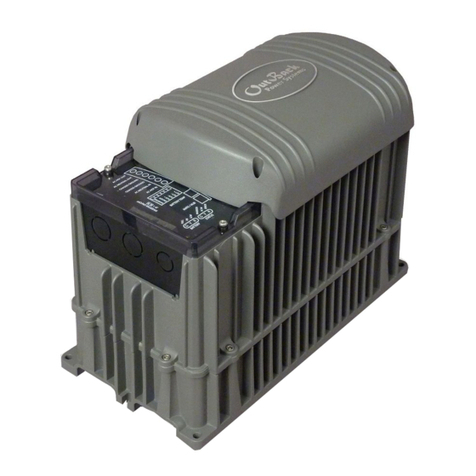
Outback Power Systems
Outback Power Systems FX2024ET installation manual
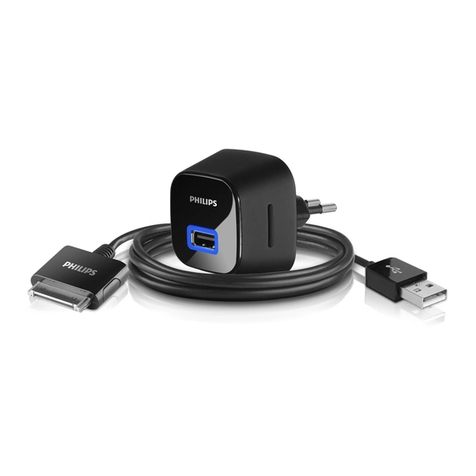
Philips
Philips DLM96467 brochure
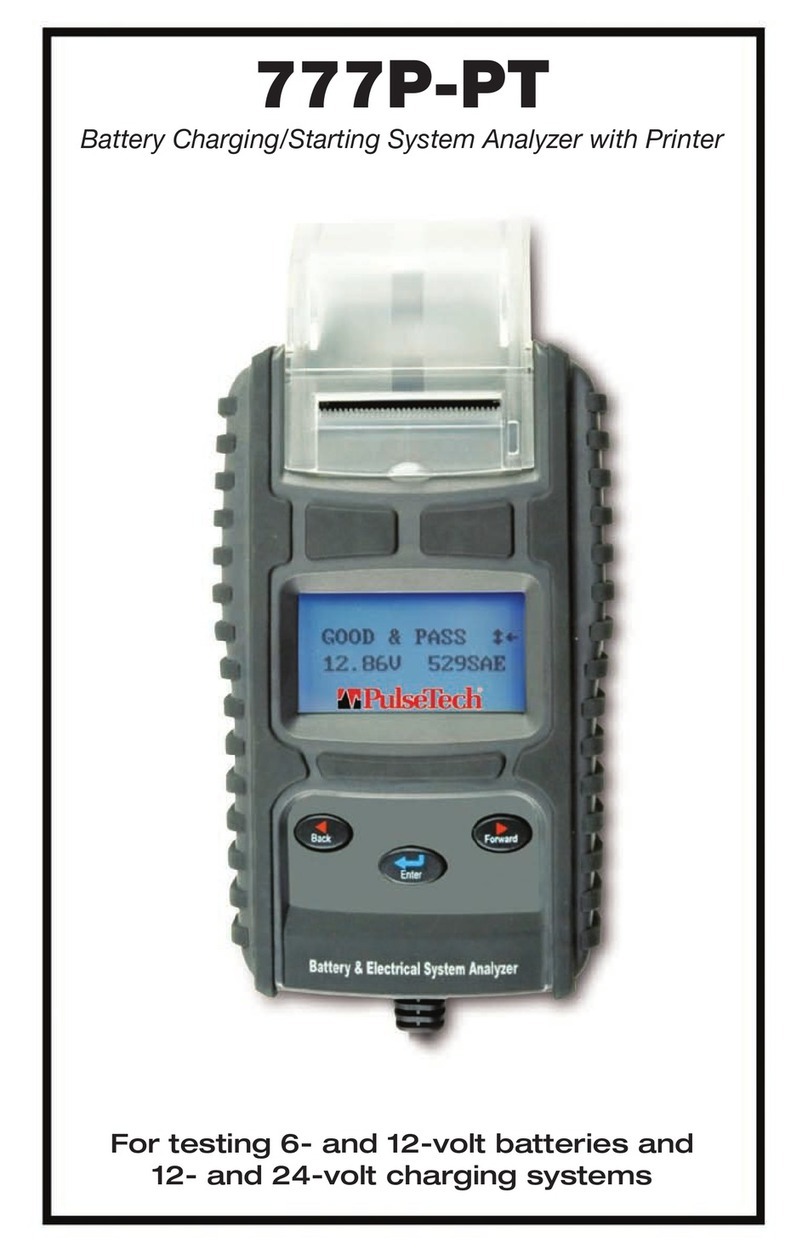
PulseTech
PulseTech 777P-PT instruction manual
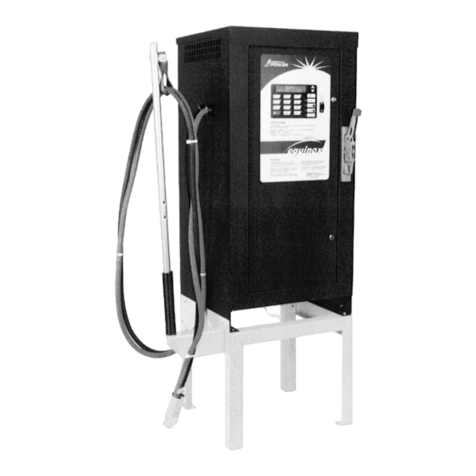
Ametek
Ametek PRESTOLITE POWER EQUINOX owner's manual

Minuteman
Minuteman 957722 operating instructions
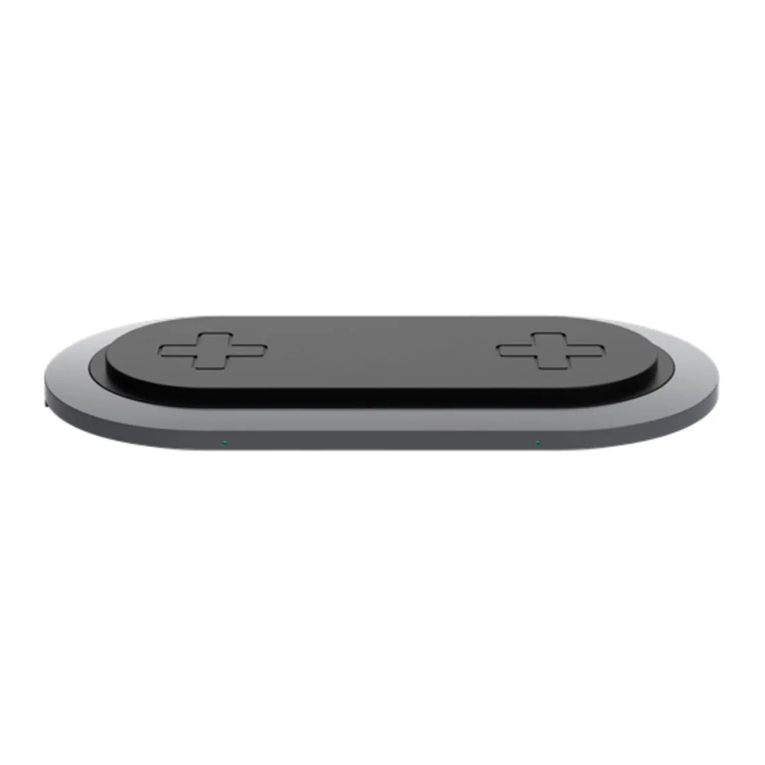
Sprout
Sprout 15W Dual Wireless Charging Pad user manual
